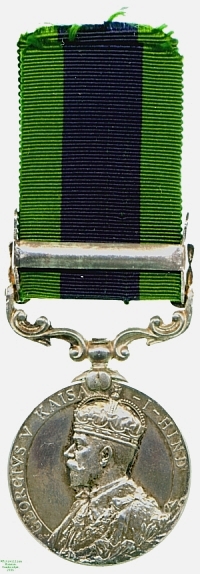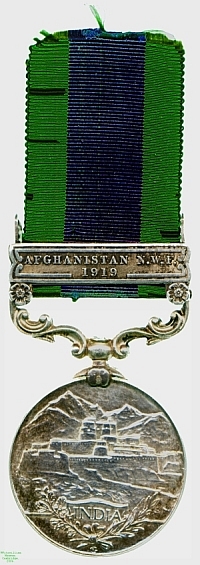
Obverse, a portrait of King George V in robes

Reverse, Jamrud fort overlooking Khyber Pass with mountains behind

Obverse, a portrait of King George V in robes |

Reverse, Jamrud fort overlooking Khyber Pass with mountains behind |
The India Medal of 1895 having needed alteration for its last issues due to the death of Queen Victoria, in 1908 it was decided to replace it entirely with a new medal of Edward VII, which was first issued in 1909. When the first issue was made under King George V, in 1911, Richard Garbe designed a new obverse but the medal was otherwise unaltered.
Afghanistan, though outside the British Empire, had remained under close British attention due to its pivotal position between Russia and British India, resulting in the series of political plays which Kipling immortalised as "The Great Game". When Amanullah Khan seized control of the state after the unexpected murder of his father Habibullah Khan in 1919, he was well positioned to take advantage of a recent deterioration in these relations due to the Russian Revolution of 1917. He declared formal Afghan independence and repudiated previous treaties. His early successes in expelling British forces from his borders led to a retaliation in force, including the bombing of his capital by the RAF, which was a key factor in forcing an Afghan surrender later in 1919.
This medal was awarded to Gunner R. J. Smith of the Royal Field Artillery for participation in this campaign. Lester Watson acquired the medal at some point before 1928.